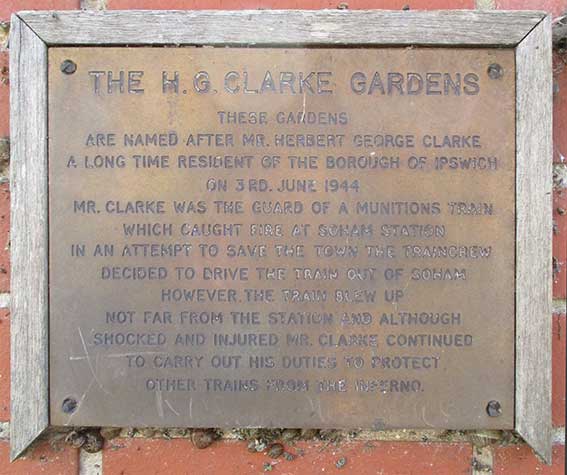'THE H.G. CLARKE GARDENS
THESE GARDENS
ARE NAMED AFTER MR. HERBERT GEORGE CLARKE
A LONG TIME RESIDENT OF THE BOROUGH OF IPSWICH
ON 3RD. JUNE 1944
MR. CLARKE WAS THE GUARD OF A MUNITIONS TRAIN
WHICH CAUGHT FIRE AT SOHAM STATION
IN AN ATTEMPT TO SAVE THE TOWN THE TRAINCREW
DECIDED TO DRIVE THE TRAIN OUT OF SOHAM
HOWEVER THE TRAIN BLEW UP
NOT FAR FROM THE STATION AND ALTHOUGH
SHOCKED AND INJURED MR. CLARKE CONTINUED
TO CARRY OUT HIS DUTIES TO PROTECT
OTHER TRAINS FROM THE INFERNO.'
The full story of this
extraordinary event follows.

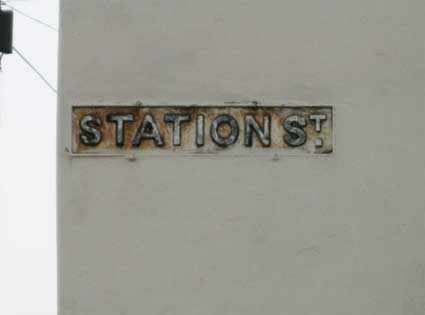 2014
images
2014
images


 2014 images
2014 images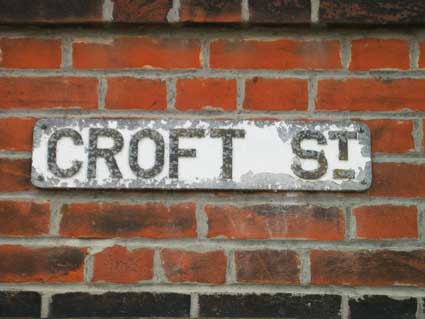 2014 image
2014 image
 Courtesy Ipswich Society
Courtesy Ipswich Society 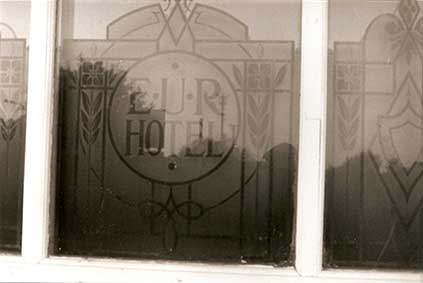 Photo courtesy The Ipswich Society
Photo courtesy The Ipswich Society

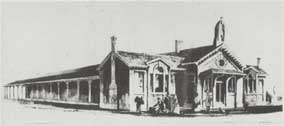 Ipswich's first station
Ipswich's first station images from late 1970s
images from late 1970s

 Image
courtesy John Barbrook
Image
courtesy John Barbrook <2007
<2007
 <2011
<2011

 Photographs
courtesy Ian Childs
Photographs
courtesy Ian Childs 2017 images
2017 images
 2019
images
2019
images